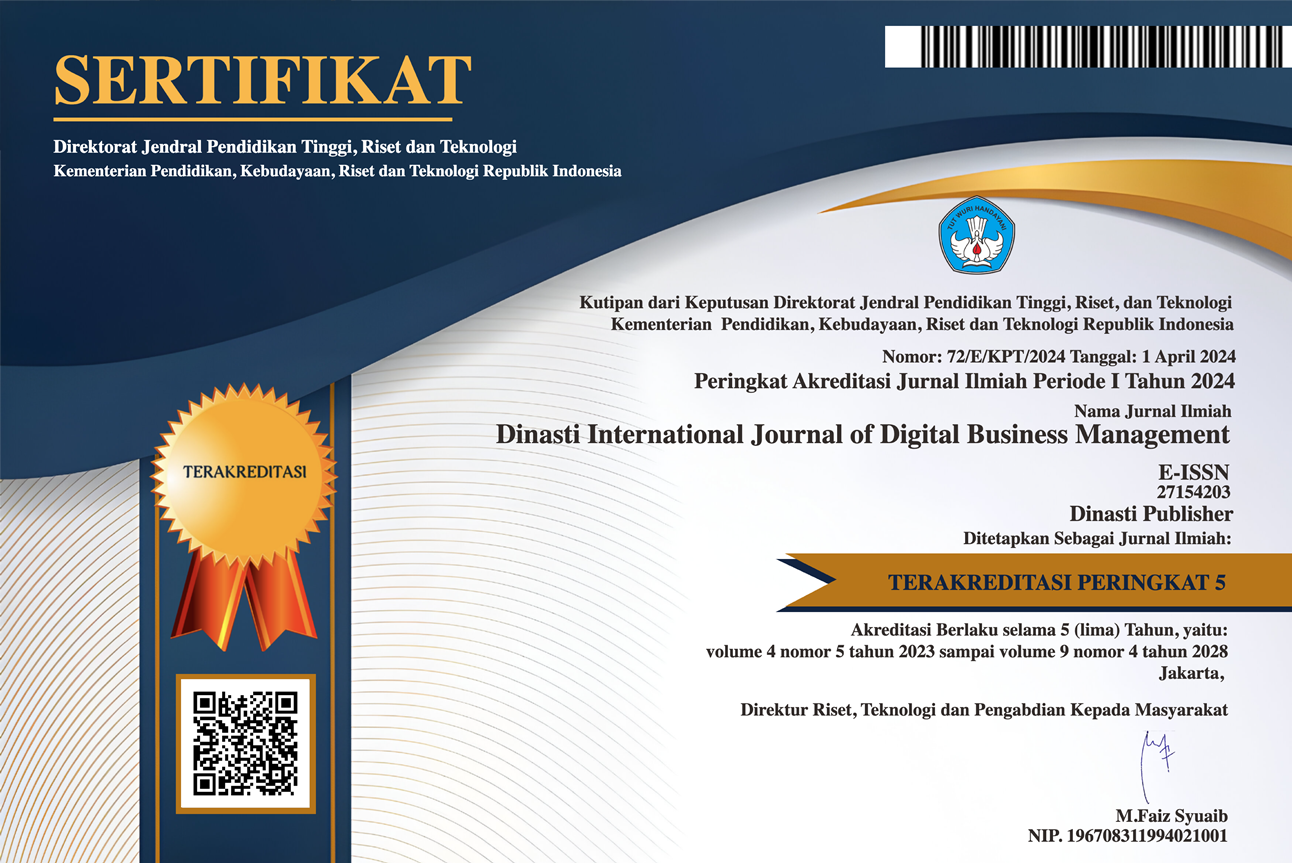Evaluation of Reverse Logistics Management Performance In After-Sales Repair-Return Service
DOI:
https://doi.org/10.31933/dijdbm.v5i3.2444Keywords:
Reverse Logistics, Repair-Return, Evaluation, Descriptive QualitativeAbstract
The purpose of this research is to evaluate the performance of reverse logistics management in terms of after sales service repair return activities such as the activity of managing the broken item, export and import, and broken item handling activities at the warehouse etc. using the purposive sampling, the respondents selected consists of 5 person whose active engage in the activity. This research is conducted through descriptive qualitative data analysis with interviews, observations, and internal documentation. According to the research results of reverse logistics management on repair returns, there are still a lot of rooms needed to improve the performance, and speed up the lead time. There is still a room for improvement needed such as SOP standardization of each reverse logistics activities involved itself, should have need some of goods movement configuration and management such as, flow of communication, flow of goods, flow of documents and the administrative work improvement on creating the export import license permit document to avoid the error which can lead to a longer lead time.
References
Aidina, L., & Suwandi. (2023). Analisis Proses Pengiriman Barang Ekspor Melalui Transportasi Laut (Studi Kasus PT. Mitra Kargo Indonesia Semarang). Sanskara Manajemen Dan Bisnis, 1(03), 182–191. https://doi.org/10.58812/smb.v1i03.146
Blanchard, D. (2008). Supply Chain Managament Practices.
Huang, S. T., Bulut, E., & Duru, O. (2019). Service quality evaluation of international freight forwarders: an empirical research in East Asia. Journal of Shipping and Trade, 4(1). https://doi.org/10.1186/s41072-019-0053-6
Hugos, M. (2008). Essential of Supply Chain Management. Wiley, November, 1–38.
Kappauf, J., Lauterbach, B., & Koch, M. (2011). Logistic Core Operations with SAP: Procurement, Production and Distribution Logistics (Google eBook).
Power, D. (2005). Supply chain management integration and implementation: A literature review. Supply Chain Management, 10(4), 252–263. https://doi.org/10.1108/13598540510612721
Sakai, T., Kawamura, K., & Hyodo, T. (2016). Logistics Facility Distribution in Tokyo Metropolitan Area: Experiences and Policy Lessons. Transportation Research Procedia, 12(June 2015), 263–277. https://doi.org/10.1016/j.trpro.2016.02.064
Toomey, J. W. (2012). Inventory Management: Principles, Concepts and Techniques. Springer US. https://books.google.co.id/books?id=6A7aBwAAQBAJ
Downloads
Published
Issue
Section
License
Copyright (c) 2024 Mohammad Alfian, Nofrisel Nofrisel, Aswanti Setyawati

This work is licensed under a Creative Commons Attribution 4.0 International License.
Authors who publish their manuscripts in this journal agree to the following conditions:
- The copyright on each article belongs to the author(s).
- The author acknowledges that the Dinasti International Journal of Digital Business Management (DIJDBM) has the right to be the first to publish with a Creative Commons Attribution 4.0 International license (Attribution 4.0 International (CC BY 4.0).
- Authors can submit articles separately, arrange for the non-exclusive distribution of manuscripts that have been published in this journal into other versions (e.g., sent to the author's institutional repository, publication into books, etc.), by acknowledging that the manuscript has been published for the first time in the Dinasti International Journal of Digital Business Management (DIJDBM).















































